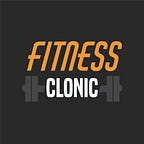What are 3 disadvantages of the Paleo diet?
Introduction
Imagine stepping into a world where you eat like a caveman. Sounds intriguing, right? That’s exactly what the Paleo diet promises. It beckons with the allure of natural foods, free from the shackles of modern processing.
But as with any journey, there are bumps along the road. Today, let’s walk through the forest of the Paleo diet and uncover three significant disadvantages that might make you reconsider this primal path.
What is the Paleo Diet?
Picture yourself in the Paleolithic era, hunting and gathering your meals. The Paleo diet is built on this concept. It encourages you to eat like our ancestors did — lean meats, fish, fruits, vegetables, nuts, and seeds — while avoiding grains, legumes, dairy, and processed foods.
Proponents argue that this way of eating is more in tune with our biology and can ward off modern ailments. But let’s delve deeper into the less sunny side of this diet.
Disadvantage 1: Nutrient Deficiencies
Our first stop is at the crossroads of nutrient intake. The Paleo diet, by cutting out entire food groups, can leave you standing in a nutritional desert.
Calcium and Vitamin D
Dairy, often our main source of calcium and vitamin D, is out of the picture in the Paleo world. Imagine trying to build a strong house without bricks. That’s what happens to your bones without these nutrients.
You might find some calcium in green leafy vegetables or nuts, but it’s like gathering pebbles instead of boulders. For those who are concerned, considering a Calcium and Vitamin D Supplement might be a wise choice.
Fiber
Next, think about your digestive system as a finely tuned engine. Fiber from whole grains and legumes keeps it running smoothly. Without these, you might find yourself frequently stranded with digestive troubles.
If you’re worried about your fiber intake, a High-Fiber Supplement can help bridge the gap.
B Vitamins and Iron
Finally, envision your body’s energy factories running low on fuel. Whole grains and legumes are rich in B vitamins and iron, vital for energy and blood health.
Without them, you’re left scavenging for scraps in meats and fish. To ensure you’re not missing out, a B Vitamins Complex might be necessary.
Disadvantage 2: Restrictive Nature
Our journey now takes us to a more challenging terrain — the restrictive nature of the Paleo diet.
Social Implications
Imagine being invited to a feast, but you can only eat from a small corner of the table. Dining out or attending social gatherings can become a test of your willpower and flexibility.
The joy of sharing meals can turn into a chore as you navigate menus and ingredient lists.
Psychological Impact
Living within such tight dietary boundaries can also take a toll on your mind. The constant vigilance over what you eat can lead to anxiety and guilt, especially when you step outside the Paleo lines.
It’s like walking a tightrope with little room for error. To help manage this stress, keeping a Mindfulness Journal can be beneficial.
Disadvantage 3: Cost and Accessibility
Finally, we arrive at the financial and logistical hurdles of the Paleo diet.
High Costs
Imagine filling your shopping cart with grass-fed meats and organic produce. The bill at the checkout can be staggering. These premium foods often come with premium prices, making the Paleo diet an expensive venture.
To ease the burden slightly, consider options like Grass-Fed Beef Jerky for a cost-effective, Paleo-friendly snack.
Accessibility
Consider the struggle of living in a food desert or a remote area. Accessing the variety of fresh produce and high-quality meats that the Paleo diet demands can be a Herculean task.
Even in urban areas, finding consistent, affordable sources of these foods can be daunting. Services like Fresh Produce Delivery might offer some relief.
Conclusion
As we conclude our journey through the Paleo diet, it’s clear that while it offers a return to natural eating, it comes with significant challenges. Nutrient deficiencies, the restrictive nature of the diet, and the high costs and accessibility issues are major factors that can impact your health and lifestyle.
By understanding these drawbacks, you can make a more informed decision about whether to embrace this dietary path.
FAQ
1. Can I get enough calcium on the Paleo diet without dairy?
Yes, but it requires careful planning. Consider supplements if you’re unable to meet your needs through diet alone. You might find it helpful to use a Calcium Supplement.
2. Is the Paleo diet suitable for everyone?
Not necessarily. Individuals with specific dietary needs or medical conditions should consult a healthcare professional before making significant dietary changes.
3. How can I ensure I’m getting enough fiber on the Paleo diet?
Focus on eating a variety of fruits, vegetables, nuts, and seeds. Supplementing with fiber might also be helpful. Check out this Fiber Supplement to support your intake.
4. Are there any cost-effective ways to follow the Paleo diet?
Buying in bulk, choosing seasonal produce, and opting for less expensive cuts of meat can help reduce costs.
5. Can the restrictive nature of the Paleo diet affect mental health?
Yes, restrictive diets can lead to an unhealthy relationship with food and cause feelings of guilt or anxiety when deviating from the diet. Reading Mental Health Support Books might provide helpful strategies.
By considering these factors and weighing the pros and cons, you can determine if the Paleo diet is the right choice for your dietary needs and lifestyle.
